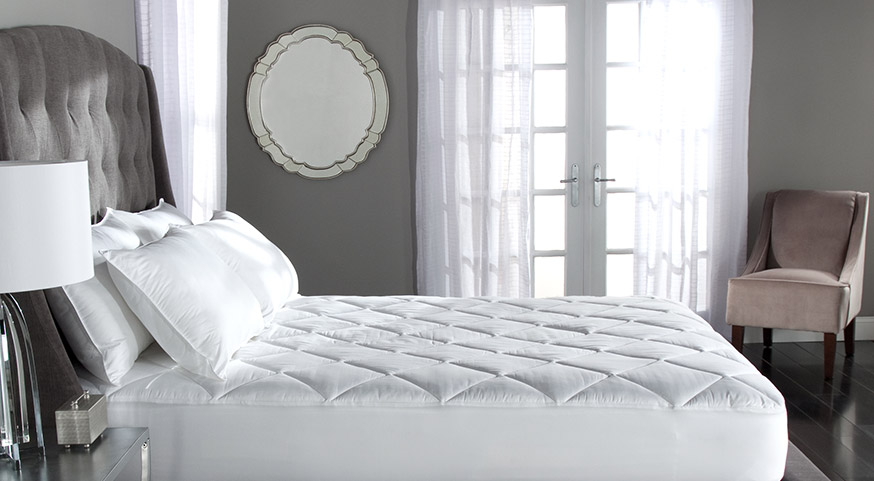Posted by Jordan Jones on Mar 15, 2023
The Science of Light and Sleep: Tips for a Better Night's Rest
Are you struggling to get a good night's sleep? If so, you're not alone. Many people experience sleep difficulties, and one major factor that can affect sleep is light.
How Light Affects the Body's Natural Sleep Cycle
Light is one of the most important factors that affects the body's natural sleep-wake cycle. When the eye is exposed to light, it sends signals to the brain to suppress the production of melatonin, a hormone that helps regulate sleep. This is why light exposure at night can disrupt sleep, making it more difficult to fall asleep and stay asleep.
Circadian Rhythms and Their Impact on Sleep
Circadian rhythms are the body's natural internal clock that regulates the sleep-wake cycle. These rhythms are influenced by external factors, such as light and temperature, and can be disrupted by things like shift work and travel across time zones. Disrupted circadian rhythms can lead to sleep disturbances and other health issues.
Your body’s circadian clock responds to light as a signal to be awake, and dark as a signal to fall asleep. A few tips to improve your sleep:
- Increase your amount of light during the day to be more alert.
- Darken your bedroom room at night to sleep better.
- If you have trouble falling asleep, dim the lights 2 hours before you want to go to sleep.
- If you get sleepy too early in the evening, go into a well-lit area to feel more awake.
Effects of Different Light Colors on Sleep Quality
Different colors of light have different impacts on sleep. Warm light, which has a yellow or orange tone, is generally considered the best color for sleep. This type of light promotes relaxation and can help you fall asleep more easily.
Red light is another color that can be beneficial for sleep. It has a calming effect on the body and can help promote relaxation. Red light is also less disruptive to circadian rhythms than other types of light, making it a good choice for nighttime use. The theory is that red light wavelengths stimulate the production of melatonin, a naturally occurring hormone that helps you sleep.
In contrast, cool light, which has a blue or green tone, can be stimulating and disruptive to sleep. Blue light, which is emitted by electronic devices, suppresses the production of melatonin more than any other type of light, making it particularly disruptive to sleep.
Best Color of Light for Kids and Adults
Light needs can vary depending on age, with children often requiring more sleep than adults. It's important to consider the light needs of different age groups when creating a sleep-friendly environment. For example, children may benefit from softer and warmer light to promote relaxation, while adults may prefer dimmer and cooler light.
How Light Affects Children's Sleep
Light can have a significant impact on children's sleep, particularly in the early years. Exposure to too much light can disrupt circadian rhythms and lead to sleep disturbances. Creating a sleep-friendly environment for children can help promote healthy sleep habits and improve overall sleep quality.
Tips for Creating a Sleep-Friendly Environment
- Typically the first step to create the ideal sleeping environment begins with bedding, which includes the mattress, pillows, duvet, blankets, and the sheets. Hotel bedding is a great way to make your bed both decadent and comfortable.
- Cool temperatures promote better sleep. 65-68 degrees Fahrenheit is optimal. Cooling blankets, cooling pillows and cooling bedding are available for those in warmer environments.
- Essential oils with calming scents like chamomile and lavender can help bring your sensory levels down and ease you into slumber. Avoid high-energy scents before bedtime like peppermint, lemon, and rosemary.
- Creating a dark sleep environment is an important factor in promoting healthy sleep. Minimize exposure to bright light before bedtime. Use dim lights, block out natural light with curtains or blinds, and avoid screen time two hours before bedtime. Incorporating soft and soothing lighting, such as warm (red and yellow) nightlights, can help promote relaxation and sleep. Night masks can be helpful as well, especially for those who sleep during daylight hours.
If you would like any help or professional advice before ordering your bedding, you may contact our customer service representatives by email, and they will assist you in your decisions.
Photo by cottonbro studio










